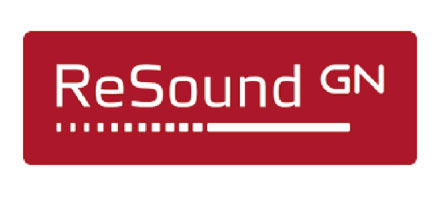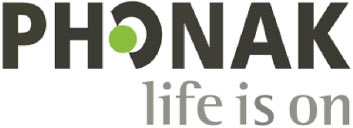Hearing Aids
Valley ENT is proud to partner with some of the largest companies in hearing aids who also do the most research and development. View more about them below:
If your hearing loss is sensorineural (due to "nerve damage" to your inner ear), a hearing aid can help by making sounds louder and easier for you to hear. The audiologists at Valley ENT will discuss with you the benefits of using hearing aids, demonstrate the various types of devices that are available, and recommend a device that's right for you and fit you with it.
Removable hearing aids make sounds louder and make them easier for the inner ear to pick up. They're typically either analog or digital.
Analog hearing aids convert sound into electrical signals, then make them louder. They work like a microphone plugged into an amplifier. You can program them for different environments, like a small room or a crowded restaurant.
Digital hearing aids convert sound into a numerically coded signal, manipulate that signal, and then change it back into sound. You can program them to amplify only those frequencies where you have hearing loss. In general, digital devices give you more flexibility than the analog kind. But they also cost more.
Both types come in many different models.
Behind-the-ear models are often best for mild to severe hearing loss, and it includes a plastic case, which you wear behind your ear and a small clear plastic tube feeds to your ear canal. The sound is sent through an ear mold that you put in your outer ear. These models are larger and typically more powerful than some alternatives.
Open-fit hearing aids are a variation and are also worn behind your ear. They relay sound through a narrow tube that you put into your ear canal but which allows the canal to stay open. Some people prefer them because they're smaller, less noticeable and don't give you a "plugged-up" feeling.
In-the-ear models are better suited for mild to severe hearing loss. The parts are so small that they fit completely inside your outer ear. These are not ideal for young children because their outer ears are still growing. Like some behind-the-ear aids, some in-the-ear aids have a small magnetic coil, called a telecoil. That makes it easier to talk on the phone and can also pick up signals from special systems called audio induction loops installed in some public places like churches, schools, airports, and auditoriums to help individuals with reduced hearing. Bluetooth connectivity is also becoming more common in hearing aids.
In-canal models are best for mild to moderately severe hearing loss. They're small enough to fit inside your ear canal. This makes them far less visible than other hearing aids. But their size makes them harder for some people to adjust and remove. They're also less powerful than larger ones, and they usually can't have a telecoil.
Surgically Implanted Hearing Devices:
Cochlear Implants
If the inner ear has severe damage, even the most powerful hearing aid will not be adequate to improve your hearing. In that case, your doctor may recommend a cochlear implant. These bypass damaged parts of the ear and send signals directly to your auditory nerve that relays sound to the brain. A cochlear implant has an external component (which looks like hearing aid) that has a microphone and signal processor. The implantable component goes behind the ear and under the skin. Sound information goes to electrodes that a doctor puts in your inner ear with surgery.
These implants can help adults who are deaf or severely hearing-impaired. They can also help children with profound hearing loss have better speech and language skills. It does take time and practice to interpret the signals they send to the brain. In some cases, a cochlear implant can be used in one ear, and a hearing aid in the other. There is also a hybrid cochlear implant which combines a hearing aid and a cochlear implant in the same ear - but this is only suitable for certain patients.
If you're considering a cochlear implant, your Valley ENT doctor will evaluate to see if you are a candidate, and discuss the risks and benefits with you. Cochlear implantation is often a covered benefit by insurance companies.
Bone Conduction Hearing Implants
Some types of hearing loss - especially those that include interruption of the pathway for sound vibrations to get to the inner ear -can be treated with a bone conduction hearing implant. This is typically a small magnetic (about the size of a quarter) which was implanted under the skin behind the ear. And external device, which looks like a small hearing aid, attaches magnetically, and sound vibrations are transmitted directly to the inner ears. This type of implant can also be used for deafness in one ear, when the hearing in the other ear is near-normal. This is often a covered benefit by your medical insurance policy.
Ear Surgery
In some cases, surgery of the ear may be an option to improve hearing. Perforations or holes in the eardrum can be corrected and hearing improved. Some patients are found to have a certain type of fixation of the hearing bones (Otosclerosis) which is also correctable by surgery. Any associated infections or growths may be treated with surgery -and hearing improvement may be a goal of this type of surgery as well. In some cases where there was fluid behind the eardrum, placement of a small tube in the eardrum to help the body get rid of the fluid will improve the hearing as well. There are many scenarios with respect to ear surgery, and your doctor will discuss if surgery is an option.
Valley ENT has 22 locations across the Phoenix, Scottsdale, East Valley, West Valley, and Tucson areas to serve you better.


